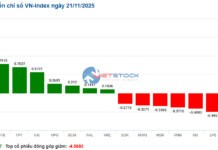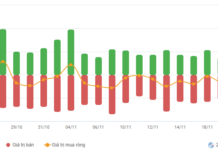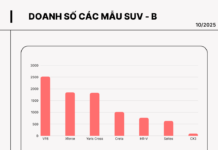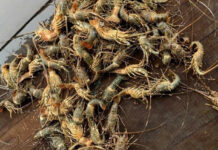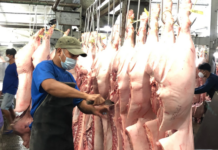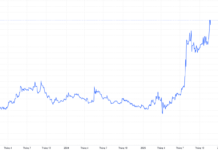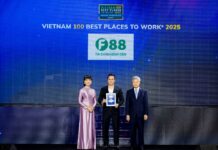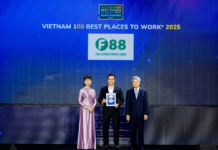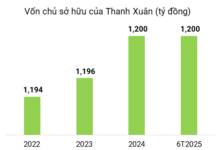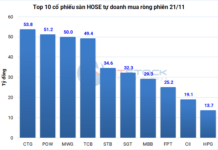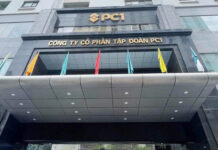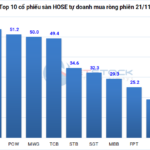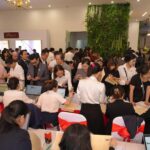According to food industry strategy consultant Do Duy Thanh, Director of FnB Director Consulting Company and Horeca Business School, this year’s Mid-Autumn Festival can be seen as a market test. Those who quickly learn from the experience, reposition their products, and adjust sales channels will gain a competitive edge when entering the Lunar New Year season—a much larger and more significant market.
Breaking the habit of “buying mooncakes during Mid-Autumn”
Reporter: Why are street mooncake stalls so quiet this year?
– DO DUY THANH: The 2025 mooncake market has seen a noticeable shift. Consumers no longer adhere to the tradition of “buying a few boxes of mooncakes” during Mid-Autumn. Instead, they are more cautious with spending, focusing on products that are genuinely safe and backed by reputable brands.
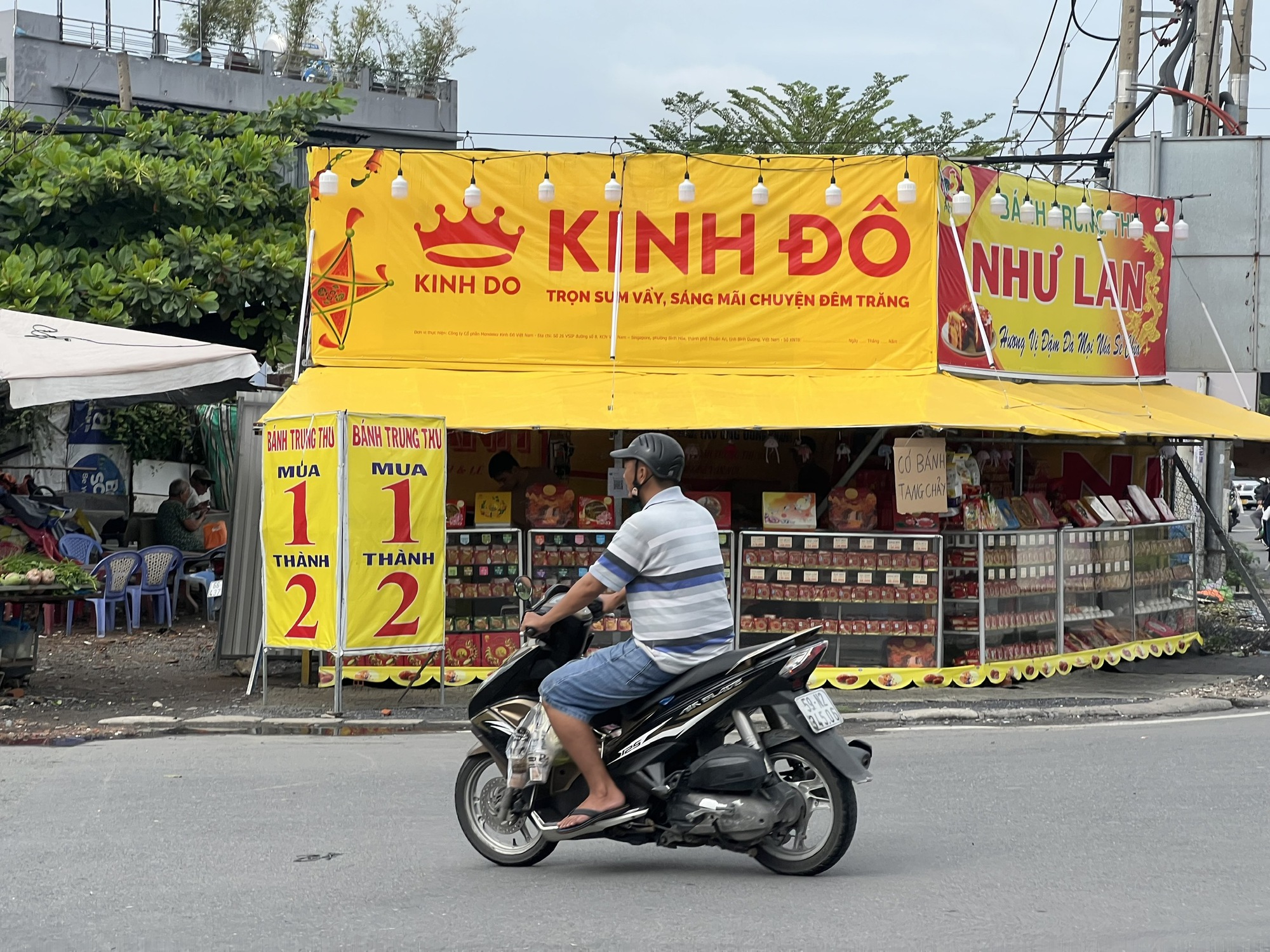
Despite aggressive promotions, street mooncake stalls are no longer attracting customers.
Another critical factor is food safety concerns. Annual reports of low-quality or unverified mooncakes have made consumers more hesitant. As a result, street stalls are losing ground to official stores, supermarkets, and e-commerce platforms.
From a broader perspective, the absence of street stalls doesn’t signify a dying market but rather a shift in purchasing channels toward more reliable options.

Expert Do Duy Thanh at the Coffee Talk “Gen Z’s Trendy Beverages” hosted by Nguoi Lao Dong Newspaper, held at Gigamall (Thu Duc City, HCMC) in May 2025.
The market seems sluggish, yet more F&B brands are launching mooncakes. How is this segment performing this year?
– In the premium gifting segment, the market remains vibrant. Customers are willing to spend on mooncakes paired with elegant packaging, trusted brands, and symbolic gifting value. This highlights that gifting remains the primary driver.

Tan Dong Khanh mooncakes discounted by 49%.
Conversely, the mass market faces challenges. This isn’t solely due to tightened consumer spending but also the abundance of alternatives: modern pastries, chocolates, imported fruits, health gift baskets, and even dining or experience vouchers. For young people, a mooncake is no longer the default gift it once was.
Mid-Autumn is no longer a single-product game but a competition among various gift options.
Are mooncakes becoming more expensive?
Why do many consumers still find mooncakes expensive?
– The perception of “expensiveness” stems from the gap between actual utility and product positioning. Mooncakes, made from basic ingredients, carry additional costs: elaborate packaging, extensive marketing, complex distribution, and seasonal inventory risks.
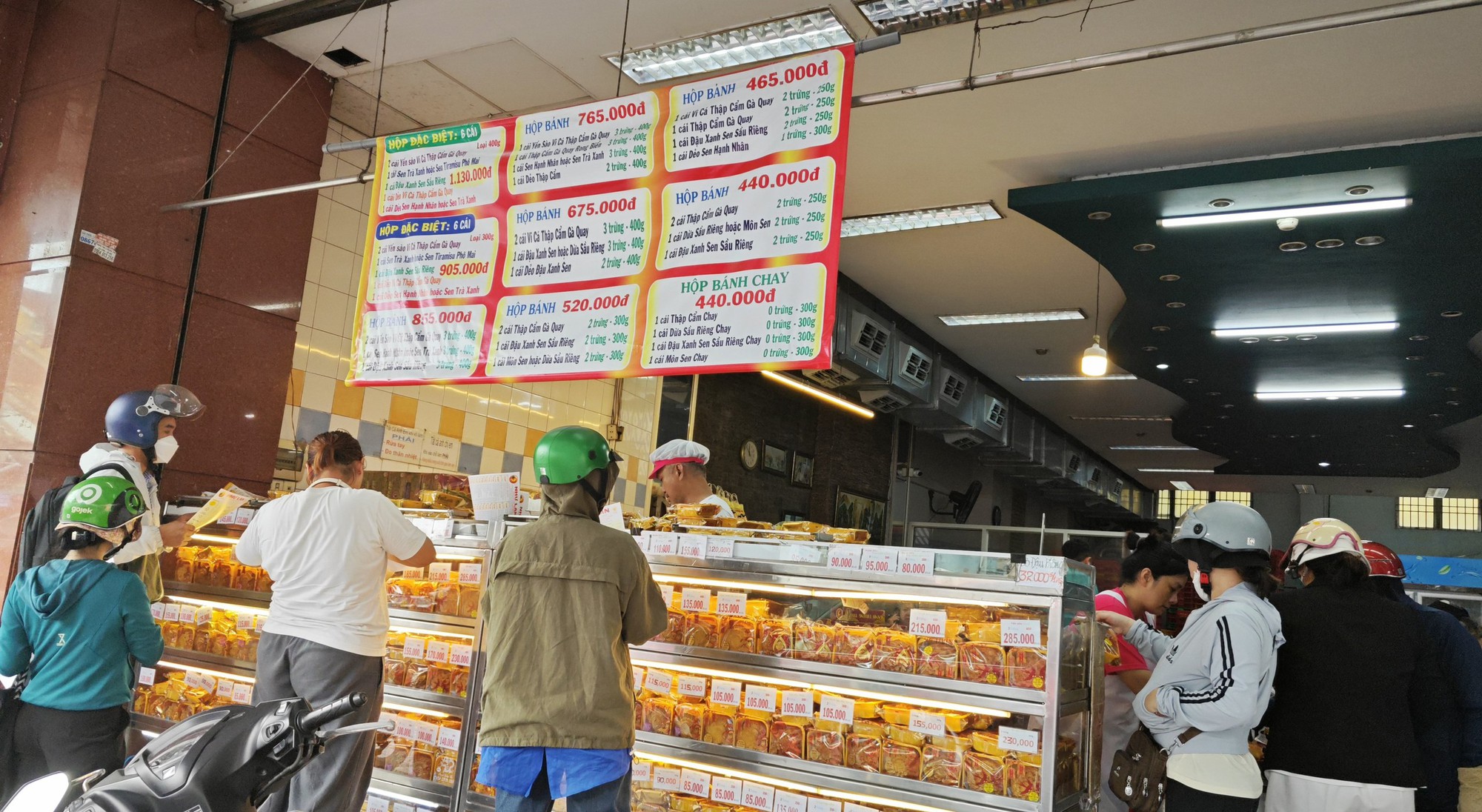
Consumers purchasing mooncakes at Nhu Lan store.
Additionally, mooncake prices are “positioned” by their gifting role. As a symbolic gift, the price reflects not just ingredients but also cultural value. However, consumer preferences are shifting toward less sweetness, healthier options, and innovation—changes products haven’t kept pace with. This mismatch leaves many feeling the price doesn’t align with the experience.
What lessons can businesses take from this Mid-Autumn market for the upcoming Tet season?
– This Mid-Autumn season offers three key lessons for the food industry.
First, brand trust is paramount. Customers will pay a premium for trusted brands but will reject products of unclear origin.
Second, health trends cannot be ignored. Companies must develop less sugary, less fatty options, even personalized products for health-conscious or diet-specific consumers.

Consumers purchasing mooncakes discounted by 50% at a store.
Third, clear segmentation is essential. Premium gifting remains a pillar, while mass-market players must integrate experiential value rather than solely competing on price to retain market share.
This year’s Mid-Autumn can be seen as a market “test.” Those who quickly adapt, reposition products, and adjust sales channels will gain a competitive edge in the much larger and more critical Lunar New Year season!
Thank you, Mr. Thanh!

